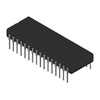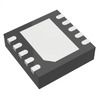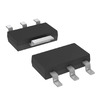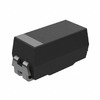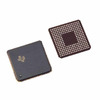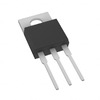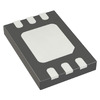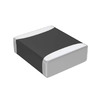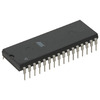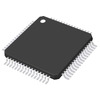DS1990A: Redefining Security and Efficiency in Data Storage and Authentication Technologies
In this article, we explore the details of the iButton's design, its special physical features, and the many ways it can be used, such as for access control and asset management. We'll also discuss about the DS1990A model, focusing on its specific features, practical uses, and how it communicates through the 1-Wire protocol. Whether you're interested in technology, work in logistics, or are just curious about smart devices, this guide provides helpful insights into how the iButton improves security and efficiency in different situations.
Catalog

The iButton Concept
The iButton, short for information button, functions similarly to a smart card microchip but offers the distinguishing feature of a specialized enclosure. This strong casing, crafted from stainless steel, enhances its suitability for demanding environments, with dimensions ranging from 17.35mm x 3.1mm to 5.89mm. This 16mm-thick housing ensures the device's resilience, making it appropriate for diverse uses.
The ability to affix the iButton to everyday items such as key chains, rings, or watches not only enhances its convenience but also subtly captures elements of human routine and the desire for seamless interaction with technology. This ease of attachment reflects a longing for integration and efficiency in daily tasks, whether it's securing access, managing assets, or recording data.
Features of DS1990A iButton
The DS1990A, developed by Dallas Semiconductor (now Maxim Integrated), serves as an iButton tag used for electronic registration numbers within automatic diagnostic systems. This small-scale device incorporates a factory-programmed 64-bit ROM that includes a unique 48-bit serial number, an 8-bit CRC, and an 8-bit family code. Data transmissions utilize the 1-Wire® protocol, requiring only a single signal line and a ground loop, ensuring absolute traceability. Its durable package resists dust, moisture, and vibration. The button-shaped form factor makes it easy to align with read/write heads, facilitating smooth attachment to various objects such as containers, trays, and bags. Logistics companies often deploy this device to track shipments even in challenging environments. Warehouse management systems gain considerable benefits, as the iButton's unique ID helps maintain precise inventory tracking, reducing errors caused by manual entry.
Replacements and Equivalents
• DS1920
• DS1972
• DS1982
• DS1991
Functional Block Diagram of DS1990A
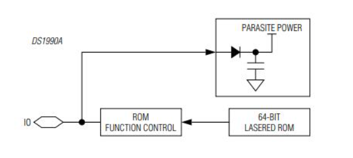
Components of DS1990A
Internal ROM
The internal ROM holds the unique identification number good for the DS1990A’s operation. This ID is used for applications involving security and identification systems due to its integrity and uniqueness.
Functional Control Unit
This unit governs the data exchange between the internal ROM and external devices, ensuring efficient communication protocols. Operating alongside other components, the functional control unit aids in facilitating seamless operations and smooth data flow.
Parasitic Power Circuitry
Comprised of parasitic capacitors and rectifiers, the parasitic power circuitry allows the DS1990A to function without needing a direct power supply. It efficiently harvests energy from the data line, ensuring device functionality even in low-power environments. This feature excels in scenarios demanding minimal maintenance and high energy efficiency.
Attachments and Connectivity of DS1990A
DS9101 Clip
The DS9101 clip is designed for securing the iButton with a reliable mechanical interface for a stable physical connection. Practitioners often observe that the stability of this connection can mostly influence the system's overall reliability.
DS9092 Probe
The DS9092 probe facilitates interfacing the DS1990A with microcontrollers or circuits, allowing easy integration into electronic systems. This connectivity greatly expands the DS1990A's application across various technological setups.
USB Adapters (DS9490R and DS9490B)
These USB adapters, DS9490R and DS9490B, enable the connection of the DS1990A to modern computing systems, effectively bridging the gap between traditional hardware and contemporary interfaces. In field applications, these adapters are frequently used, providing quick and reliable connectivity for operational success.
Applications of the DS1990A iButton
The DS1990A iButton is often employed for address-type purposes, providing a unique, easily accessible 64-bit identifier without write functionality. With its swift 5-millisecond read time and simple 1-Wire protocol, the device requires physical contact for operation, making it well-suited for various applications where reliability and precision are needed.
Data Collection
The iButton is a common choice in data collection schemes. Its unique identifier guarantees accurate tracking of data points across different systems, like in industrial settings for monitoring equipment performance. By integrating the iButton, organizations achieve high levels of precision and dependability in extensive data operations.
Access Control
In access control systems, the distinctive identification features of the DS1990A iButton play an important role. Its durability and straightforward use make it ideal for securing and regulating access to restricted areas. Companies often embed these iButtons into employee badges or security passes to facilitate entry procedures and bolster security measures.
Security Systems
For security applications, the iButton's unique identifier offers an additional layer of defense. By physical contact for authentication, these iButtons greatly reduce the risk of unauthorized access when compared to wireless systems vulnerable to signal interception. This proves advantageous in protecting sensitive information and high-security zones.
Inventory Control
Inventory management systems reap the benefits of the iButton's exact identification capabilities. Tagging each product with an iButton ensures seamless tracking through various supply chain stages. This integration enhances inventory accuracy, mitigates losses, and boosts overall operational efficiency.
Serial Data Communication
The DS1990A iButton is also valuable in serial data communication. Its 1-Wire protocol enables straightforward connectivity and data transfer, great in environments that prioritize simple, reliable communication standards for device interoperability.
Product and Resource Identification
The iButton proves integral in product and resource identification processes. Industries such as manufacturing and logistics utilize these identifiers to streamline operations, enforce quality control, and manage resources efficiently. These implementations highlight the iButton's versatility and its positive impact on operational productivity.
How does DS1990A Communicate with the Host Device?
The DS1990A utilizes the 1-Wire protocol for wireless communication with a host device. This method is designed to simplify complexity and boost reliability. When the host device initiates a request, the DS1990A responds by transmitting its unique identifier (ID) along with any relevant data. The host device then authenticates by comparing the received ID and data against pre-established values. The primary advantage of the 1-Wire protocol is its use of just a single signal lead and a ground loop, minimizing the need for extensive wiring. This simplification reduces potential points of failure and lowers overall costs. The 1-Wire protocol is inherently strong, resisting common electrical noise and signal interference. Deploying 1-Wire-based systems often proves cost-effective because of the lower expenses associated with wiring and maintenance.
Specifications of DS1990A iButton
|
Specifications |
Value |
|
Storage Temperature |
-55°C ~ 125°C |
|
Operating Temperature |
-40°C ~ 85°C |
|
Operating Voltage |
2.8V ~ 6V |
|
Maximum Input Low Voltage |
0.3 volts |
|
Minimum Input High Voltage |
2.2 volts |
|
Minimum Recovery Time |
1 us |
|
Maximum Data Reading Time |
15 us |
|
Input/Output Sink Current |
20 mA |
|
Typical Input Load Current |
0.25 uA |
How to Use iButton with a Computer or Microcontroller to Retrieve the 64-bit Identification Code?
To retrieve the 64-bit unique identifier of the DS1990A, integrate both hardware and software with either a microcontroller or a computer. This comprehensive process includes several steps and components, each contributing to the successful identification and communication with the iButton device.
Creating stable connections is require for accessing the iButton's unique code. Maxim offers various adapters to facilitate this interfacing. Among these, the DS9490R USB adapter is a popular choice. It acts as a bridge between the iButton and the host PC, ensuring accurate data transmission and reception.
Effective communication with the DS1990A requires specific software tools. The OneWireViewer software, the appropriate Maxim driver, and the Java Runtime Environment (JRE), that needs to be installed for the software to function properly on most Windows systems.
When working with a microcontroller, it’s require to write precise control code adhering to the 1-Wire communication protocol used by the iButton. Platforms such as Arduino, Raspberry Pi, or ESP8266 are capable of reading the 64-bit identification code using specific libraries designed to manage 1-Wire communication.
Frequently Asked Questions [FAQ]
1. How does DS1990A communicate?
The DS1990A utilizes the 1-Wire protocol, a serial communication method that permits multiple devices to coexist on a single bus. This technique is cost-effective and minimizes complexity. The simplicity of a single-wire bus carrying both data and clock signals can reduce wiring complexity. This setup saves space in embedded systems, an aspect valued in precise and compact designs.
2. What is the code of the iButton?
The iButton code comprises a family code, a serial number, and a checksum.
Family Code: The two rightmost digits (01) denote the iButton family code.
Checksum: The two leftmost digits (90) act as a checksum, verifying the serial number and family code.
Unique Serial Number: The middle sequence (00001BF2743A) is the unique serial number of the iButton.
3. How does iButton work?
An iButton operates through its stainless steel enclosure, which serves as an interface featuring a data contact (the ‘lid’) and a ground contact (the ‘base’). This enclosure, connected to an internal silicon chip, facilitates reliable and durable connections when interacting with readers or other devices. The stainless steel casing offers physical durability, making the iButton suitable for harsh environments or mobile applications, where both resilience and performance can make any difference.
4. How can I interface with the DS1990A using a microcontroller?
Interfacing with the DS1990A via a microcontroller requires an understanding of the 1-Wire protocol and appropriate software libraries. The protocol's single-wire nature allows for straightforward connection setups, reducing installation and maintenance concerns. Consistent and accurate data transactions ensure that the microcontroller properly reads and writes data to the DS1990A, a process that can be used in applications requiring reliable and precise data handling.
About us
ALLELCO LIMITED
Read more
Quick inquiry
Please send an inquiry, we will respond immediately.
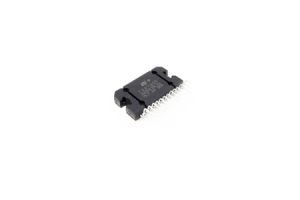
TDA7850 Audio Amplifier: Power and Performance
on September 25th
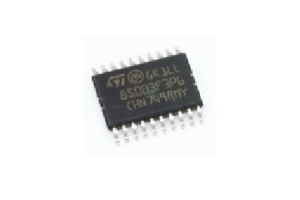
Comprehensive Guide to the STM8S003F3P6TR Microcontroller
on September 25th
Popular Posts
-

What is GND in the circuit?
on January 1th 3040
-

RJ-45 Connector Guide: RJ-45 Connector Color Codes, Wiring Schemes, R-J45 Applications, RJ-45 Datasheets
on January 1th 2609
-

Fiber Connector Types: SC Vs LC And LC Vs MTP
on January 1th 2162
-

Understanding Power Supply Voltages in Electronics VCC, VDD, VEE, VSS, and GND
on November 13th 2077
-

Comparison Between DB9 and RS232
on January 1th 1790
-

What Is An LR44 Battery?
Electricity, that ubiquitous force, quietly permeates every aspect of our daily lives, from trivial gadgets to life-threatening medical equipment, it plays a silent role. However, truly grasping this energy, especially how to store and efficiently output it, is no easy task. It is against this background that this article will focus on a type of coin cell battery that may seem insignificant on the...on January 1th 1754
-

Understanding the Fundamentals:Inductance Resistance, andCapacitance
In the intricate dance of electrical engineering, a trio of fundamental elements takes center stage: inductance, resistance, and capacitance. Each bears unique traits that dictate the dynamic rhythms of electronic circuits. Here, we embark on a journey to decipher the complexities of these components, to uncover their distinct roles and practical uses within the vast electrical orchestra. Inductan...on January 1th 1706
-

CR2430 Battery Comprehensive Guide: Specifications, Applications and Comparison to CR2032 Batteries
What is CR2430 battery ?Benefits of CR2430 BatteriesNormCR2430 Battery ApplicationsCR2430 EquivalentCR2430 VS CR2032Battery CR2430 SizeWhat to look for when buying the CR2430 and equivalentsData Sheet PDFFrequently Asked Questions Batteries are the heart of small electronic devices. Among the many types available, coin cells play a crucial role, commonly found in calculators, remote controls, and ...on January 1th 1642
-

What Is RF and Why Do We Use It?
Radio Frequency (RF) technology is a key part of modern wireless communication, enabling data transmission over long distances without physical connections. This article delves into the basics of RF, explaining how electromagnetic radiation (EMR) makes RF communication possible. We will explore the principles of EMR, the creation and control of RF signals, and their wide-ranging uses. The article ...on January 1th 1623
-

Comprehensive guide to hFE in transistors
Transistors are crucial components in modern electronic devices, enabling signal amplification and control. This article delves into the knowledge surrounding hFE, including how to select a transistor's hFE value, how to find hFE, and the gain of different types of transistors. Through our exploration of hFE, we gain a deeper understanding of how transistors work and their role in electronic circu...on November 13th 1566



